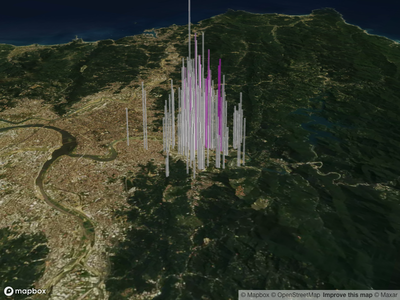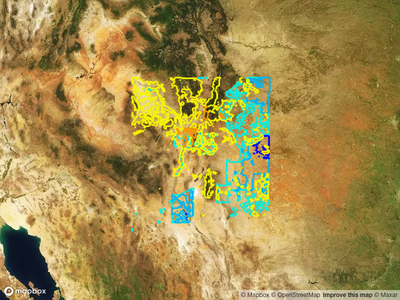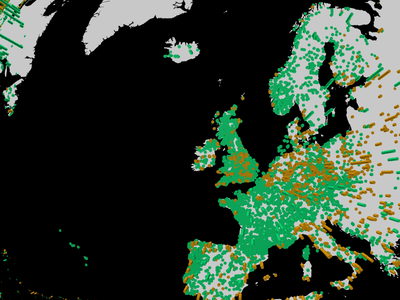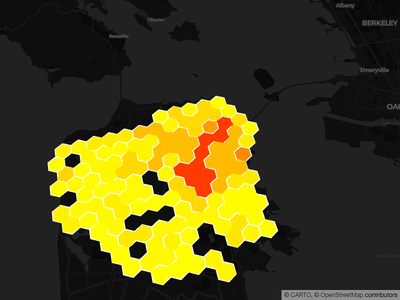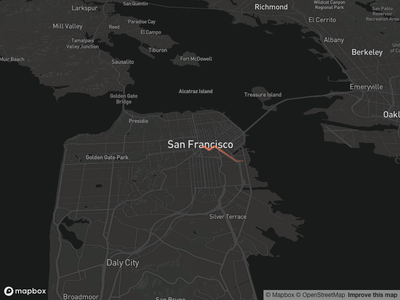Get started by installing pydeck.
Overview¶
pydeck in Jupyter¶
Uniquely integrated with the Jupyter ecosystem, pydeck supports interactions in a visualization that communicate with the Jupyter kernel. Read more about usage in Jupyter here.

Conway’s Game of Life in pydeck
Deck¶
Better understand the main object within visualization, used to write data out to a widget in Jupyter, save it out to HTML, and configure some global parameters of a visualization, like its size or tooltip.
Data utilities¶
A handful of functions to make certain common data exercises easier, like automatically fitting a viewport to data on a map or quickly coloring categorical data
ViewState¶
Used to set the precise location of a user’s vantage point on the data, like a user’s zoom level
View¶
Used to enable or disable map controls and also modify the kind of map projection, like plotting in flat plane instead of plotting on a mercator projection
LightSettings (Experimental)¶
Configure the lighting within a visualization.
Note
The pydeck library assumes Internet access. You will need an Internet connection or the visualization will not render.
Currently, pydeck will not raise an error on incorrect or omitted Layer arguments.
If nothing renders in your viewport, check your browser’s developer console
or review the layer catalog. You are encouraged to file an issue by clicking here
and mention pydeck in the title.



